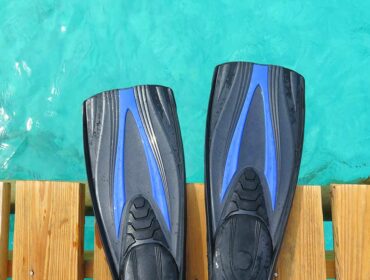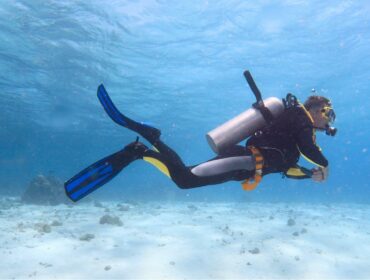Proper finning may be one of the last things you think about when undergoing scuba training, but learning specific techniques can save you energy under the water, and make for a more efficient dive. While mainly used by technical divers, the frog kick is one technique that can also be useful in other applications.
Your legs and fins will be your main source of propulsion, rather than your arms. The main benefit of learning the frog kick is being able to move through confined spaces like caves or shipwrecks without kicking up silt. It can also be used to conserve energy, as it takes less physical effort than the flutter kick. Good buoyancy control is a must when learning to frog kick, but it can be mastered with a bit of practice.
The frog kick technique is fairly simple. You bend your knees at a 90-degree angle, with your fins flat and parallel with your thighs. Pull your knees in toward your belly as you angle the heels of your feet towards one another. Then make a circular motion with your feet and return to your starting position.
This technique can be used when you want to move more slowly to better examine your surroundings, or as a way to rest when tired. The frog kick takes much less effort than the standard flutter kick, helping you conserve air as well as energy.
There is also the modified frog kick, which is good to use in confined spaces. Similar to the standard method, you keep your knees and thighs stationary and rotate your ankles to give a gentle kick to your feet. This allows you to move forward without disturbing the surrounding environment.
For a quick tutorial, check out this informative video explaining the technique. Learning the frog kick is a great way to keep moving while still allowing you to conserve air and energy.




